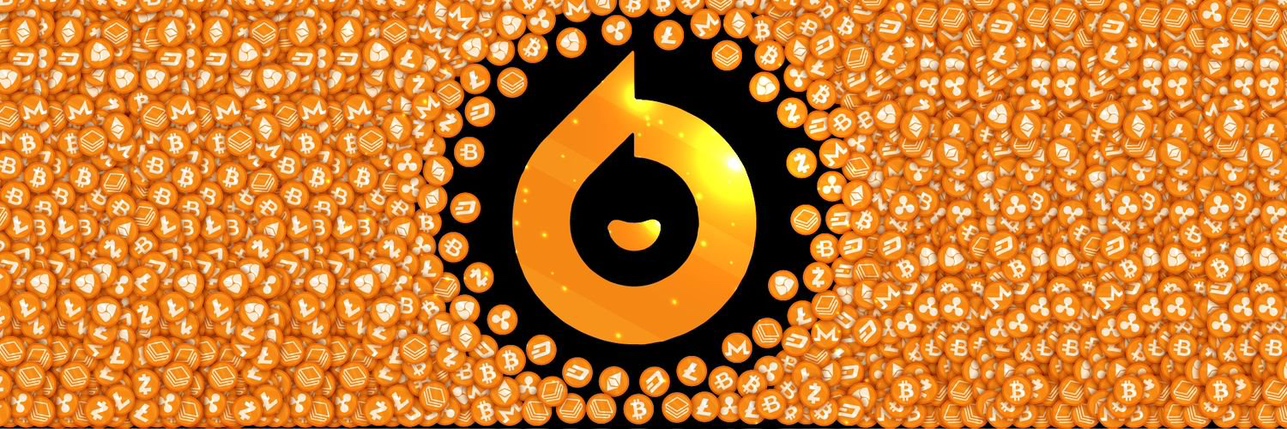
Prix de Distributed Autonomous OrganizationDAO
Convertisseur DAO vers EUR
Données du marché Distributed Autonomous Organization
Prix de Distributed Autonomous Organization du jour en EUR
Pensez-vous que le prix de Distributed Autonomous Organization va augmenter ou diminuer aujourd'hui ?
Maintenant que vous connaissez le prix de Distributed Autonomous Organization aujourd'hui, voici ce que vous pouvez explorer :
Comment acheter Distributed Autonomous Organization (DAO) ?Comment vendre Distributed Autonomous Organization (DAO) ?Qu'est-ce que Distributed Autonomous Organization (DAO)Que se serait-il passé si vous aviez acheté Distributed Autonomous Organization (DAO) ?Quelles sont les prévisions de prix pour Distributed Autonomous Organization (DAO) cette année, en 2030 et en 2050 ?Où puis-je télécharger l'historique des prix de Distributed Autonomous Organization (DAO) ?Quels sont les prix des cryptomonnaies similaires aujourd'hui ?Vous souhaitez obtenir des cryptomonnaies instantanément ?
Achetez des cryptomonnaies directement par carte bancaire.Tradez diverses cryptomonnaies sur la plateforme Spot pour l'arbitrage.Prévision de prix de Distributed Autonomous Organization
Quel est le bon moment pour acheter DAO ? Dois-je acheter ou vendre DAO maintenant ?
Quel sera le prix de DAO en 2026 ?
En 2026, sur la base d'un taux de croissance annuel prévu de 5%, le prix de Distributed Autonomous Organization (DAO) devrait atteindre €0.02234. Sur la base de ces prévisions, le rendement cumulé issu de la détention de Distributed Autonomous Organization jusqu'à la fin de 2026 atteindra +5%. Pour plus de détails, veuillez consulter :Prédictions de prix de Distributed Autonomous Organization pour 2025, 2026, 2030 à 2050.Quel sera le prix de DAO en 2030 ?
À propos de Distributed Autonomous Organization (DAO)
#L'Importance Historique et Les Caractéristiques Clés des Cryptomonnaies
Les cryptomonnaies représentent une rupture radicale et significative dans le monde financier, ayant des répercussions bien au-delà de leur utilité en tant que nouvelles formes de monnaie numérique. Revenons sur l'histoire des cryptomonnaies et leurs rôles transformationnels dans l'économie numérique d'aujourd'hui, tout en soulignant les principales caractéristiques qui les distinguent des formes traditionnelles de monnaie.
Signification Historique
Les cryptomonnaies ont été introduites pour la première fois en 2009 avec le lancement du Bitcoin (BTC). Ce dernier a été conçu pour contourner les institutions financières traditionnelles, permettant des transactions peer-to-peer sans intermédiaires. Cet événement marquant a posé la première pierre de la création d'un système financier décentralisé.
Au fil des années, l'influence des cryptomonnaies a continué de croître, affectant non seulement l'économie mondiale, mais aussi la façon dont nous percevons la monnaie.
Caractéristiques Clés des Cryptomonnaies
- Décentralisation
La décentralisation est l'élément clé des cryptomonnaies. Contrairement à la monnaie fiduciaire, les cryptomonnaies ne sont contrôlées par aucune institution centrale, telle qu'une banque ou un gouvernement. Cela signifie que les transactions peuvent être effectuées sans qu'une tierce partie ne soit impliquée.
- Sécurité
Les cryptomonnaies utilisent une technologie de cryptage pour assurer la sécurité des transactions. Cette technologie, appelée blockchain, protège contre la fraude et permet l'immuabilité des transactions.
- Anonymat
Les transactions de cryptomonnaies peuvent offrir un niveau d'anonymat que les transactions financières traditionnelles ne peuvent pas fournir. Bien que toutes les transactions soient publiques et traçables sur la blockchain, les identités des parties impliquées sont cachées.
- Accessibilité
Les cryptomonnaies peuvent être accessibles à quiconque ayant une connexion internet. Cela signifie qu'elles peuvent être une solution pour les personnes non bancarisées dans le monde.
- Délai d'exécution rapide
Les transactions en cryptomonnaies peuvent être traitées beaucoup plus rapidement que les transactions fiduciaires traditionnelles. Cela est particulièrement utile pour les transactions internationales, qui peuvent souvent prendre plusieurs jours avec les méthodes traditionnelles.
En conclusion, les cryptomonnaies ont redessiné le paysage financier avec leur décentralisation, leur sécurité, leur anonymat, leur accessibilité et leur rapidité. Elles continueront probablement d'évoluer et de s'adapter pour répondre aux besoins changeants de notre économie numérique, tout en présentant de nouvelles opportunités et défis pour les consommateurs, les entreprises et les gouvernements du monde entier.
Bitget Insights




Convertisseur DAO vers EUR
Pages liées à DAO
Tags:
Que puis-je faire avec des cryptos comme Distributed Autonomous Organization (DAO) ?
Déposez facilement et retirez rapidementAchetez pour croître, vendez pour réaliser des profitsTradez en Spot pour l'arbitrageTradez des Futures pour un risque et un rendement élevésGénérez un revenu passif avec des taux d'intérêt stablesTransférez des actifs avec votre portefeuille Web3Comment acheter Distributed Autonomous Organization ?
Comment vendre Distributed Autonomous Organization ?
Qu'est-ce que Distributed Autonomous Organization et comment Distributed Autonomous Organization fonctionne-t-il ?
Prix mondiaux de Distributed Autonomous Organization
Acheter plus
FAQ
Quel est le prix actuel de Distributed Autonomous Organization ?
Quel est le volume de trading sur 24 heures de Distributed Autonomous Organization ?
Quel est le record historique de Distributed Autonomous Organization ?
Puis-je acheter Distributed Autonomous Organization sur Bitget ?
Puis-je gagner des revenus réguliers en investissant dans Distributed Autonomous Organization ?
Où puis-je acheter des Distributed Autonomous Organization au meilleur prix ?
Prix des cryptomonnaies liées
Prix de cryptos nouvellement listées sur Bitget
Événements du moment
Où puis-je acheter des cryptos ?
Section vidéo – vérifier son identité rapidement









